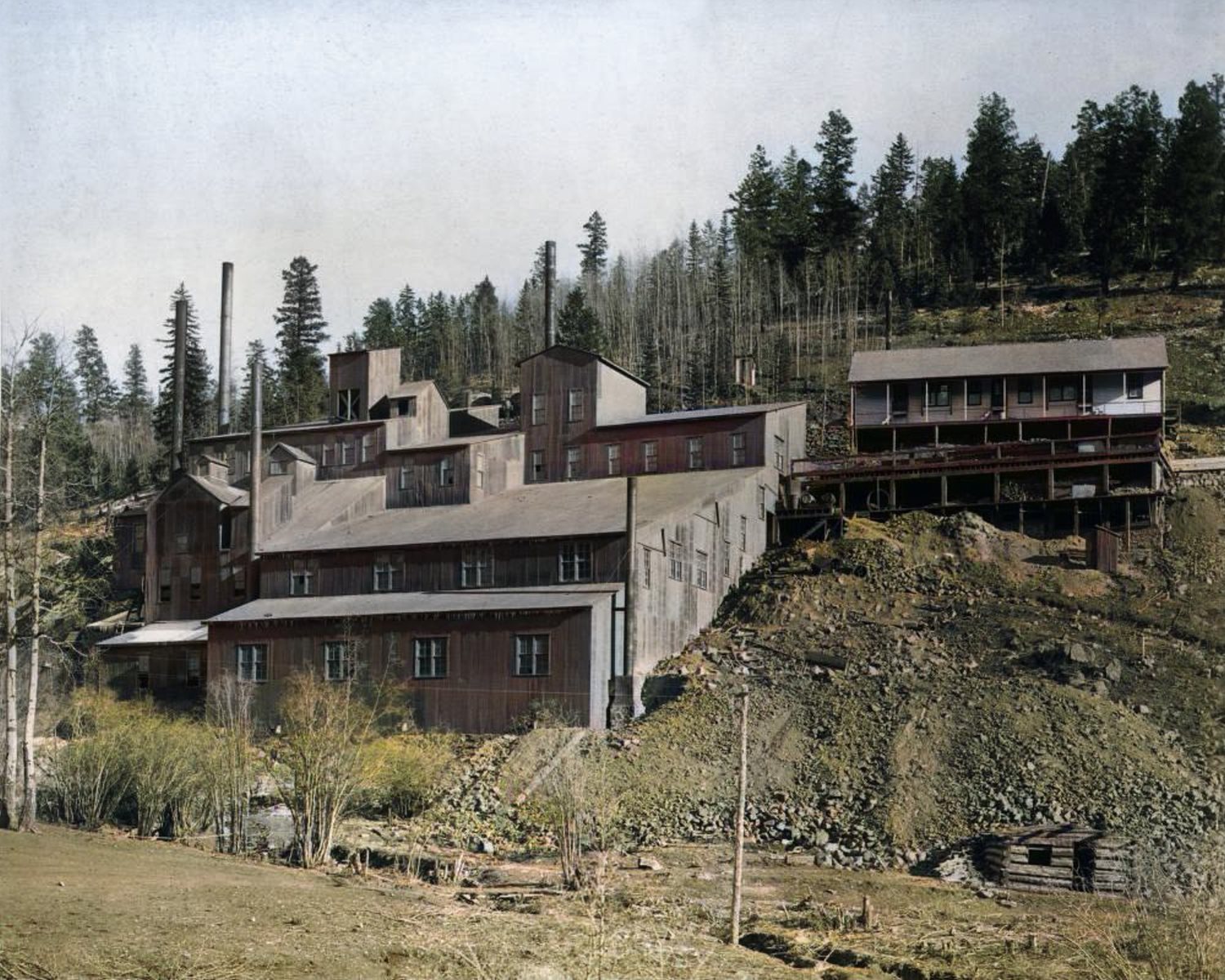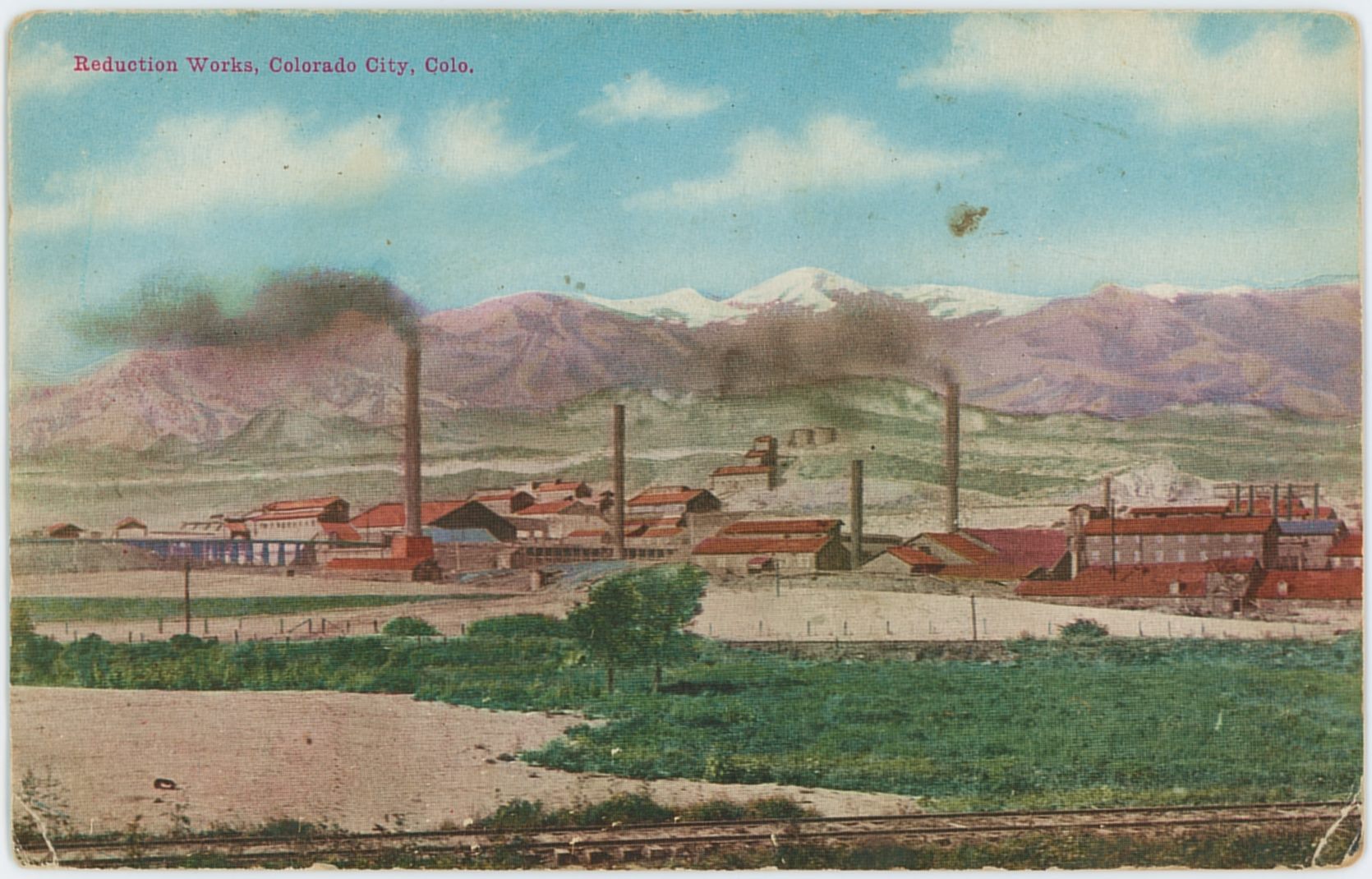-> My Collection, Also on
-> HathiTrust Digital Library Site; Link to article.
Source had no images, so I used some images from my collection.
If the coveted two million mark was not attained in the Cripple Creek district last month, there were other records made that were none the less important, if less ostentatious.
We have very generally been making the mistake of valuing a district by its total output of gold and have been ignoring the importance of other achievements whose bearing on the industry is of far greater moment than the mere piling up of gold.
Progress in metallurgy is one of the achievements to which we refer and which may be credited to the operators in the Cripple Creek district.
Fortunately, the getting of gold has not been without its problems, and it is the solution of these that has, after all, made our greatest gold fields what they are. This is true to such an extent that certain metallurgical devices or processes become synonymous with the district where they had their initiation or in which they were brought to perfection.
Thus South Africa is associated with tube mills and the cyanide process.
Western Australia is just now suggestive of grinding pans.
The subject of dredging almost immediately recalls certain portions of California.
And placer operations are too closely connected with Alaska to mention the one without thinking of the other.
Viewed from the standpoint of its importance to metallurgy, therefore, the simple statement that 16,000 tons of Cripple Creek ore were treated by the cyanide process during the month of October is seen to be more than a mere commonplace item in statistics.
It might not be taking too sanguine a view of the situation to say that it marks an epoch in the metallurgical history of the district and that this epoch will prove the most profitable in the gold camp's history and contribute largely to the two million mark, toward which every energy was directed last month.
This would indeed be a victory no less renowned than those of war, for withal that Cripple Creek has ever been a high grade camp, it is quite naturally in possession of bodies of low grade ore that have been at once the hope and despair of the metallurgist.
The records for October show that 16,300 tons of ore varying in value from $2.75 per ton to $6 per ton were treated by the cyanide process. Almost 60% of this tonnage was of the lower grade named. Such a record is indeed worthy of more than passing comment, especially in view of the fact that no great time has elapsed since the proposition to cyanide Cripple Creek ores would provoke a smile and forecast a failure.
Evidently more progress has been made in one month than has been recorded for almost a year, and this may prove the needed stimulus to place the industry firmly on its feet.
The speculations as to the probable life of Cripple Creek as a gold producer have been many and varied, but no one has yet ventured the statement that the life of the district was in its low grade deposits.
It is a matter of history that high grade deposits are usually small in extent and consequently of comparatively short life, while greater profit is often to be obtained from low grade ores on account of the extent of the deposits which can be worked for many years.
Thus the Rand is the logical place to look for increased gold production in the next generation.
The high grade districts will contribute largely, but will give out and must needs be succeeded by other high grade camps in order to maintain a steady production, to say nothing of showing an increase.
The greatest importance, therefore, attaches to this new epoch-marking record made in Cripple Creek last month.
Outside of the district proper, but in a locality to which it is tributary, we note that cyaniding experiments are also being made.
The United Statas Reduction and Refining Company is reported to be erecting an experimental plant at Colorado City. Tube mills will also be given a trial in the tests and as to the results one can not as yet venture a prediction.
That the experiments will be productive of good is practically guaranteed by the reputation of the company undertaking them and we believe that they will also serve to mark the new epoch.
To a certain extent it will be possible to follow the lines laid down by cyanide operators elsewhere, but it will be necessary in a large degree to work out our own success.
Some extra text found on page 478;
The Cripple Creek district fell a trifle short of a $2,000,000 production for the month. From a point of view of tonnage, the output was the highest in the entire history of the district, being almost 15,000 tons greater than the production for the preceding month.
That the increase in value of this production over that of the September output is only a trifle over $110,000, is due to the fact that a large tonnage of low grade ores, amounting in all to 16,000 tons, was produced for treatment by the cyanide process. Thus, while the coveted $2,000,000 mark was not reached, it will be seen that other records of equal importance were established.
The treatment of 16,000 tons of ore by the cyanide process is, in itself, a very significant fact. The lowest grade ore treated was valued at only $2.75 per ton, and at this figure some profit was obtained.
The balance of the tonnage which was handled at the mills at Colorado City, the Dorcas mill at Florence and the various smelters, ranged in value up to $60 per ton.
The tonnage treated by the United States Reduction and Refining Company showed a marked decrease, owing to the fact that the plant was undergoing repairs, and consequently not operating at its full capacity.
The total value of the Cripple Creek output for October was estimated at $1,956,787, and the total tonnage at 71,600 tons.
In addition to these records established in Colorado's famous gold camp another matter of considerable importance to the district still remains to be chronicled.
Reference is made to the report on the proposed drainage tunnel, as submitted to the Mine Owners' Association by D. W. Brunton. A detailed review of Mr. Brunton's report, together with some graphic presentations of his figures, appeared in our issue of October 19th.
The substance of Mr. Brunton's report recommended the driving of a tunnel over 17,000 feet in length at a depth of 1,130 feet below the present drainage tunnel, gaining a vertical depth of 1,090 feet. The report was taken under advisement by the Mine Owners' Association and their decision has not, as yet, been announced.
A meeting was to have been held this week, at which plans for raising the money would be presented to the mine owners. It is anticipated that each and every mining property in the district will be asked to contribute 1% of its net smelter returns.
The present rate of production will net the sum of $5,000 to $6,000 a month, and the tax would not fall heavily on any of the operators. At the present writing the proposition is being favorably received by the mine owners and it is believed that the plan will be adopted.


